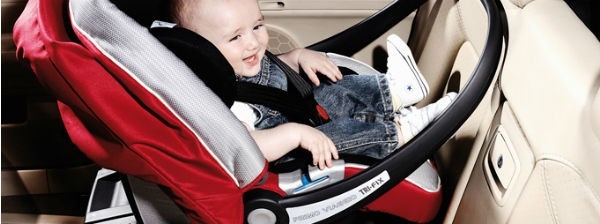ICRT, the International Consumer Research and Testing association, is an institute based in Brussels representing 40 countries around the world. ICRT encompasses various national consumer associations, such as Altroconsumo in Italy, Que Chosir in France, Which? in the UK and Stiftung Warentest in Germany.
These associations publish the ratings of products in various categories both in hardcopy and online, so as to render them accessible to everyone.
How is a product’s rating determined?
For car seats, the rating is a score ranging from 0.5 (best) to 5.5 (worst).
The final rating takes into account two main categories:
- dynamic safety, which accounts for 50% of the final score, and
- handling/ease of use, which accounts for the remaining 50% of the final score.
The rating of car seats was first conceived by the German rating company Stiftung Warentest (commonly known as STIWA) in the mid-Seventies.
Today, the rating of car seats results from the combined efforts of various companies operating together.
STIWA (Germany) publishes the results, ADAC (Germany) performs dynamic product tests, TCS (Switzerland) deals with in-vehicle product installations, and OAMTC (Austria) handles overall calculations and handling tests.
Dynamic rating is made up of two elements:
- Frontal impact: this takes place at 72 km/h against a solid barrier using a suitably stiffened vehicle structure (Golf VI).
- Side impact: this takes place at 28 km/h against a solid barrier at an angle of about 80°.
In both impacts, HIC (head injury criteria) values are considered, measuring the “amount of energy” absorbed by the head of the dummy, the head and chest accelerations, and the neck forces and moments, which determine the stress to which the neck is subjected.
An algorithm applied to these measurements, each of which has a maximum and minimum figure, gives the final score, ranging from 0.5 to 5.5. Each parameter has a particular weighting in determining the final score. These dynamic tests are conducted by ADAC, in Germany.
The tests carried out to determine the handling rating are less scientific but no less complex than those for the dynamic rating.
Rating is performed through 5 steps:
1) Placing the product in the vehicle,
2) Putting the belts in place around the child,
3) Fastening the belts,
4) Tightening the belts,
5) Subjective rating.
A score from 1 (good) to 5 (poor) is determined at each step.
Each step is also put through a Misuse Rating, with a score from 0 to 10, based on the risk of something going wrong and the consequences that this error can cause. The worst Misuse Rating is then used in the final calculation.
Installation tests are performed on three vehicle types – family vans, medium-sized cars (e.g. Golf) and city cars – using volunteers unconnected with the car seat industry or business.
When are new scores published?
At the beginning of each new rating season, STIWA, together with the other associations, performs an overview of all the new products that have entered the market and those that will be presented at industry trade fairs. A list is then compiled of all the products considered worthy of testing.
There are two particular moments of assessment during the year.
The first is a test conducted between January and February on products found on sale in December of the previous year (tests are only carried out on products already on the market). The results are then published in magazines in the month of June.
The second, instead, is a test conducted in August on products found on the market in June. These results are then published in magazines in the month of December.
The second testing has less bearing, as the products examined are far fewer than those tested at the start of the year, and is regarded as a sort of second chance for new or previously rejected products.
Once the results are published, manufacturers can ask STIWA, ADAC, OAMTC and TCS for permission to apply a nameplate on the product indicating the score obtained. This “certified” information is useful for consumers in search of parameters on which to base a decision – it must be said – of vital importance.








